Share This Article
No one comes out of the womb a professional motocross racer and knows exactly how to get around a track properly let alone fast. What about the basics of riding your dirt bike on a motocross track with other people? We all started out as lost beginners and were all squids at one point in time. There is nothing I hate more than when a good rider sees a beginner and talks trash on him/her because they aren’t as good. Or maybe they don’t have all the new gear and shit! Who cares! Instead of talking down to them or making fun of them, let’s help them! Go over and talk to them! Let’s make them feel welcome to our sport and make them want to tell their friends on how much fun it is to go to the track. We all make mistakes in our life and most of us had/have our parents there to help us through those mistakes (at least I know I did).
However, I understand that some beginner or novice riders may not have come from the same “riding friendly” family background as me. With the un-written rules/ethics of motocross riding, it can be somewhat difficult to get solid information on what to do or maybe more importantly, what NOT to do. If we learn from our mistakes we can become wiser, safer, faster, and more efficient, but in motocross sometimes those mistakes come at the cost of an injury. I wanted to share some mistakes I have made in the past and some that I have seen over the years at tracks over my time. Riding dirt bikes is dangerous enough, so knowledge shared is usually a less painful way to learn than by making the mistakes yourself. So if you’ve been around a while in this sport and are decent rider, put your ego to the side and help those newbies out there, so our sport grows and we have less angry people in the world. If your a beginner/novice rider welcome to our sport and keeferinctesting.com! This website is fun and also a great stop to learn all things dit bikes! Read this “Part One” article and try to apply this wisdom to your riding and hopefully those mistakes that you’re making now will be less after you read this!
Note: I use the phrase “pull your head out of your ass” to my thirteen year old kid a lot! This phrase goes a long way when you ride a dirt bike as well. Staying aware and pulling your head out of your ass can save your life! Every time you get on the bike, have fun, but respect it and know your surroundings.
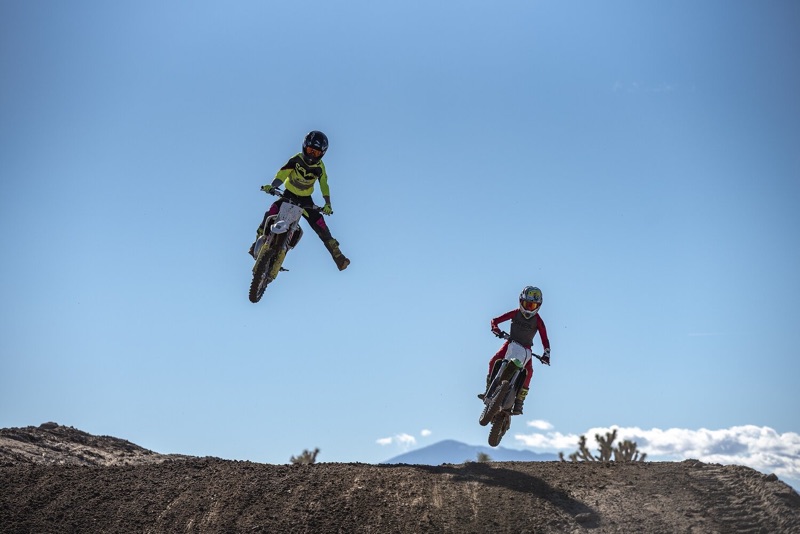
Not Holding Your Line When Faster Riders Come Up Behind You
Travis Preston and I talked about this on my podcast (Show #124 Practice Track Etiquette). On crowded tracks, slower riders tend to get nervous and worried that the faster riders won’t see them and will run into them or even land on them. To avoid the chances of this, stick to your line if a faster rider is closing in on you. The faster rider will see you and pick the best line to get around you—so if you are riding down the middle of the track, stay there. If you change your line to let them by, you’re actually making it more likely that they will run into you. If you hear them coming up when you are getting ready to jump (as long as your clearing the jump), make sure to jump straight from where you take off. Definitely don’t change lines up the face or cross jump, and if you’re going to roll the jump, approach it at a speed that announces this, don’t charge up to the jump and then get on the brakes hard. If the track is crowded maybe wait until it gets less busy with faster riders. Also, if you aren’t jumping a certain jump and you have a busy track, try to stick to the side of the jump/track so that the riders behind you know that you aren’t jumping this double/tabletop/etc.
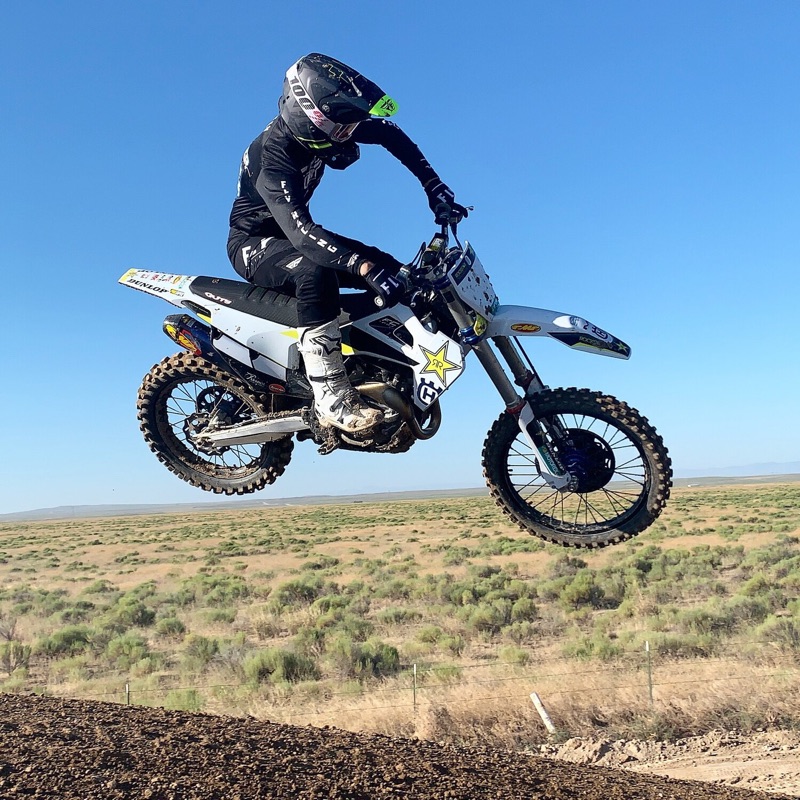
Practice Breathing
This really may sound super lame, but we actually can forget to take in enough oxygen while riding. It’s actually pretty easy to forget to breathe while riding since you’re already focused, concentrating on not crashing, shifting, braking, rolling the throttle on as well as hanging on for dear life. So you need to pick “trigger points” (AKA sections of the track) where you will take a deep breath and try to relax your muscles. If you’re comfortable jumping, they are the best trigger points; as soon as you launch, start taking a really deep breath and try to relax, hold it in for half a second, then let it out as you land. Do that on just two to three of the biggest jumps on the track and your heart rate will drop 10 to 15 beats a minute! If jumping is not your forte, then find two to three trigger points where you’re the most comfortable and take take the deep breaths at those spots. Doing this will help you ride longer and possibly get less arm fatigue.
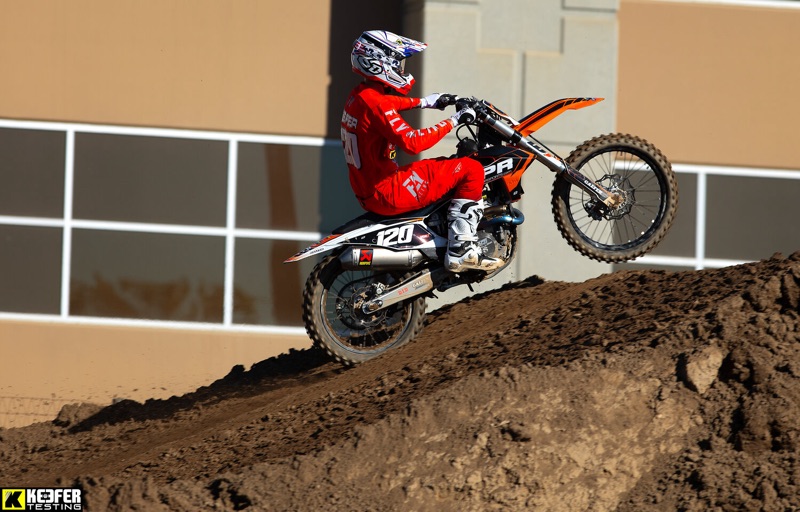
Listening To Your Clutch
Yes, just like a woman, you must listen to your motorcycle as it’s talking to you. Didn’t know bikes could talk? Yes, they can and sometimes they talk in the form of a burnt out clutch! This could cause you to crash on a big jump—you could come up short because your bike didn’t give you the power you expected. Change your oil, then give it a sniff and a look for excessive amounts of clutch fiber particles floating in the oil. Inspect your clutch components for fibers that are out of spec or blued steels (heat damaged). And it’s usually a bad idea to install softer clutch springs; they will speed up clutch wear. This is the number one thing I see when I look at a beginner/novice type of rider. I have even rode people’s bikes and have almost always have to tell them that their clutch is fried. Change your plates!
Losing Focus On The Fun
If this dirt bike thing has bitten you like it has most of us you will be trying to improve your speed or your conditioning every time you ride. This doesn’t happen overnight, you will need to put in the time, do your motos, and work on your corners, but don’t forget what riding dirt bikes is all about: fun, thrills hanging out with friends/family and enjoying life. Go out and find some cool jumps in the desert, go ride in the hills, or find some epic single-track. Forget about going faster at the track or getting in better shape once in a while, or you’ll get yourself into a rut and your improvement will slow down. Don’t let the negative dirt bike people bring you down, you know who they are. They are the ones that tell you that dirt bikes aren’t good for your health, that their death traps, or maybe even say you’ll never be pro. Clip those people out of your life.
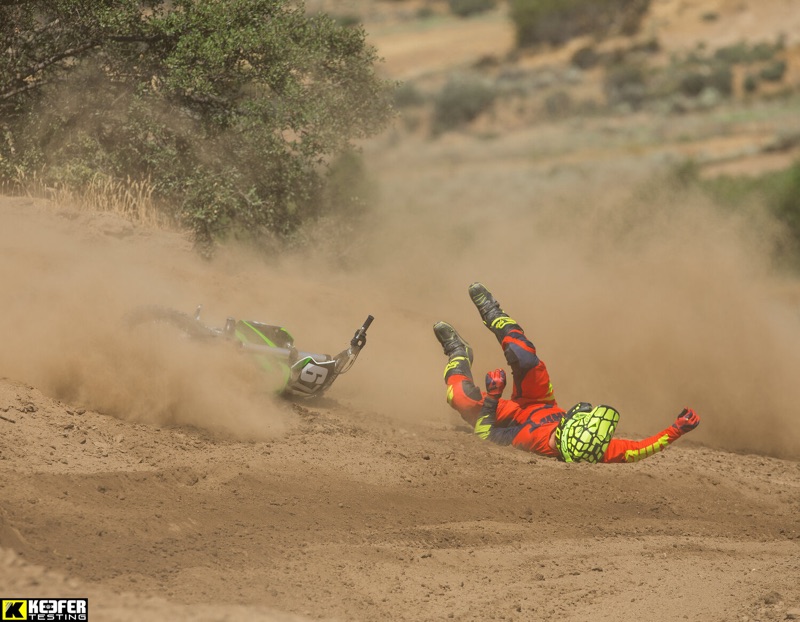
Gripping the Handlebars Improperly
Many beginner and novice riders grip the clutch lever with all five fingers when shifting. The problem with this is that you lose control of your bike during the transition from grip to clutch/front brake lever, and if you’re doing it while riding through braking bumps, you have a high chance of losing control of your bike. Train yourself to ride with one finger on the clutch lever so that you’re always ready to use them while still keeping complete control over your bike. The index finger is popular with pro riders, but many riders prefer to use their middle finger on the clutch and brake. Unlike the clutch lever you will have to take your index finger off of the front brake lever while riding to use the throttle properly. Grabbing four fingers of front brake isn’t a good thing because you will be hitting the deck mighty fast if that is the route you go. Try rolling the throttle off and using no more than two fingers to lightly pull in the front brake. The front brake contains more than 70% of your stopping power when you learn how to use correctly.
Riding With the Controls in the Wrong Position
You need to be as comfortable as possible when riding, so make sure to set up your handlebars, front brake, and clutch lever correctly before you go out on the track/trail. Don’t forget about the rear brake pedal height as well so you’re not stomping down too far or even dragging the rear brake around the track. I can’t tell you how many times I’ve seen people buy brand-new dirt bikes and jump on them with no adjustments. Running the levers too low will have you riding in the wrong position and could prevent you from saving an avoidable crash. Rolling your bars too far forward will cause your cornering ability to suffer and you will not be able to dive into corners aggressively. Try and use a neutral position on your handlebar (run it at close to the same angle as the fork) so your body positioning doesn’t suffer.
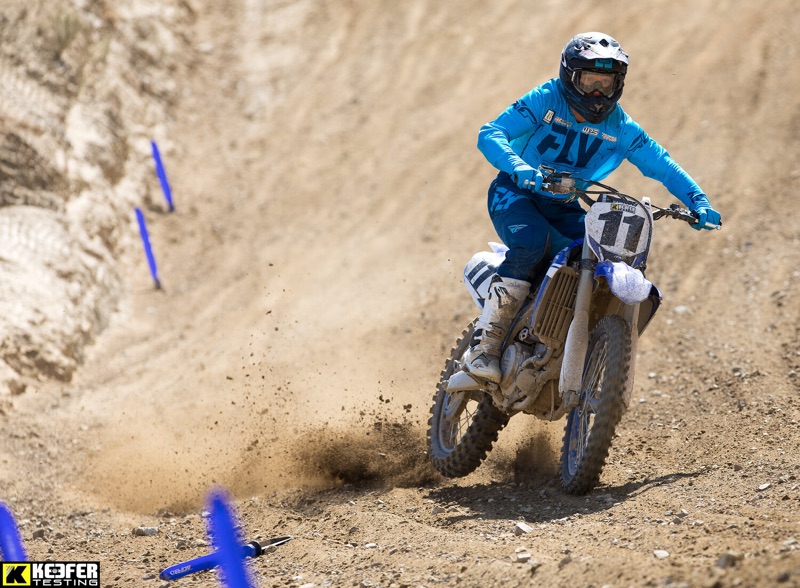
Getting Off of the Track Carelessly
Ehhhhhhhhhhhhhhh Boy…….. This is a doozy. I have been a victim of this and it isn’t fun for anyone. If you need to get off of the track, use hand signals to let the riders behind you know when you’re exiting. When you arrive at a track, look for the exit and make sure when you do exit the track you leave on the correct side. We have seen numerous riders cut across the track to exit only to get center-punched by an oncoming rider. Use your head; look behind you before exiting, raise your left hand to signal that you’re exiting, and never cross over a track in a blind section (right after a jump, hill, or high berm)! Pull your head out of your ass! It’s seriously a great phrase that I can’t use enough!
Slacking on Your Technique
This is similar to riding for fun tip, but focuses back on a different way to develop proper MX technique: challenge yourself trail riding. It improves your bike skills to find tough, technical off-road sections to conquer, like super-steep uphills, gnarly downhills, ravines, logs, rocks, streams. Finding your own lines—and sometimes just a way through—forces you to think creatively, and insane trails will make those intimidating track obstacles look like child’s play. When you are at the track make the most out of your time. Work on things you’re not so good at and have a plan. If you’re going to a track you already know, work on the parts that you’re slow in. Have that in the back of your mind when you pull up!
If you have any questions about this article or anything on our site please feel free to email me at kris@keeferinctesting.com
